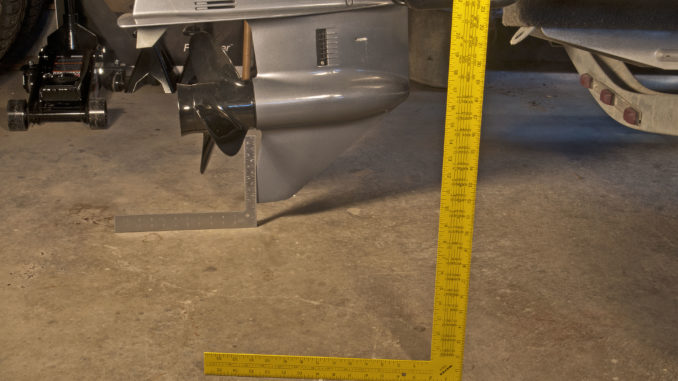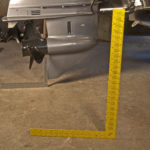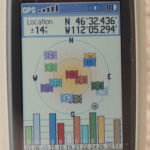
“Garbage in, garbage out” was a watchword with computers long before they were integrated into marine electronics. We rarely enter full-blown garbage into our stuff out on the water but expensive problems can stem from not giving some “minor” details the attention they deserve.
We can start with our simple but critically important sonar depth readings. We trust them to warn us of shallow water before we run aground and we compare them with those depth contour and spot depth numbers on maps and charts to verify our position. A depthfinder doesn’t actually read top-to-bottom depth; it reads the distance between its transducer and the bottom. Transducers are mounted on the transom with their operating surfaces or “faces” just a tad below the hull, glued down inside the sump area to shoot through fiberglass hulls, or mounted on a hull bottom with their threaded stems sticking up through holes in the hull and secured by threaded nuts and some very capable seals. The depth reading on your display typically reads the actual water depth minus the distance between the transducer’s face and the water’s surface. If your transducer rides a foot below the surface you’ll need to add a foot to the displayed depth to match an accurate spot or contour depth on your map or chart.
Tracking water depth is critical if you boat where water levels vary because of tides in saltwater or seasonal draw-downs and droughts in fresh water. The potential problem here is that the transducer is not the deepest point on your boat; your engine’s lower unit skeg and prop are lower on an outboard or I/O rig, and the rudder and prop are deeper than the transducer on an inboard rig. So, when you are tip-toeing through the shallows with your teeth clenched, just how far below your transducer does this expensive equipment reach? A surprising number of boaters don’t know.
It’s easy enough to figure out. Load your boat on its trailer and park it on a flat, level surface. Chock the trailer’s wheels and disconnect the trailer from your tow vehicle. Raise or lower your dolly jack at the front of the trailer until your boat sits at the same angle that it settles into in the water when it is at rest or moving at a slow walking speed. Next, tilt the engine’s drive unit as far down as you can without its skeg touching the ground. Hopefully you will be able to lower it all the way down. With a tape measure or yard stick, measure the distance between the bottom of the transducer and the ground and then measure the distance between the bottom of your drive unit’s skeg and the ground. Subtract the skeg’s distance from the ground from the transducer’s distance from the ground and the remainder will tell you how far below your transducer the skeg reaches.
If you have an inboard engine, subtract the distance between the bottom of the rudder and the ground from that of the transducer and the ground to find out how much deeper the rudder extends.
Now that you know how far below your transducer your expensive engine drive parts are running you can either memorize the extra depth measurement and mentally add it to your depthfinder’s depth reading or you can program it into your depthfinder and let it do the remembering. There is a keel offset feature somewhere in the menu system of most sonar units (usually in the “sonar installation” or “sonar setup” section). You can adjust this offset to add the extra depth you need to protect your engine drive unit’s skeg or your inboard engine’s rudder. This feature was designed with the deep keels of sailboats in mind so you don’t have to worry about running out of calibration room. Once set, your depthfinder’s depth reading will tell you how much depth you have below your skeg or rudder instead of how much depth is below the transducer. You can fudge a bit on this and get through even shallower water by tilting up an outboard or I/O engine’s drive leg but you have to be careful not to raise its cooling water inlets out of the water or you will overheat your engine.
Another opportunity to write a check for your insurance policy’s deductible amount can come while navigating routes and trails saved on your GPS unit. It is natural to save a trail or set a route of waypoints to mark a safe path through narrow channels or around dangerous obstructions. You can do this simply by saving a trail as you ease along avoiding the dangers or by setting a route by saving a waypoint each time you have to make a turn (routes operate by directing you from one waypoint to the next in straight lines). When you follow these trails and routes you need to ease along and verify your safe path with your depthfinder. I’ve seen some boaters try to run these paths planed off in darkness, smoke or driving rain and doing so is grounds for being convicted of attempted suicide. Even at peak accuracy GPS may not keep up and it isn’t designed to detect other boats or floating logs and debris.
Yes, GPS can be accurate to within a few feet but that isn’t something I’d bet my outboard’s lower unit on. The default rate for position updates on most GPS units is finding one position per second and the higher your boat speed the farther you travel between updates. Guess what that means for someone weaving through dangerous obstacles or trying to follow a narrow channel at 20 or 30 miles an hour… As you grind to a stop your depthfinder will confirm that your forward motion ceased because you ran out of water and your GPS unit will catch up in a second and confirm that it all happened because you strayed from the trail or route.
This can also lead to trouble with dangerous submerged objects that you saved as hazards or are clearly marked as known hazards on your digital charts or maps. There is no absolute level-of-accuracy guarantee; GPS can have a bad day, you may find yourself in a position where the satellites overhead are not geometrically arranged to give you the best accuracy, or unexpected local interference can degrade accuracy. Be careful and slow down in potentially hazardous areas. All the electronics you can buy are not a substitute for common sense.





Be the first to comment